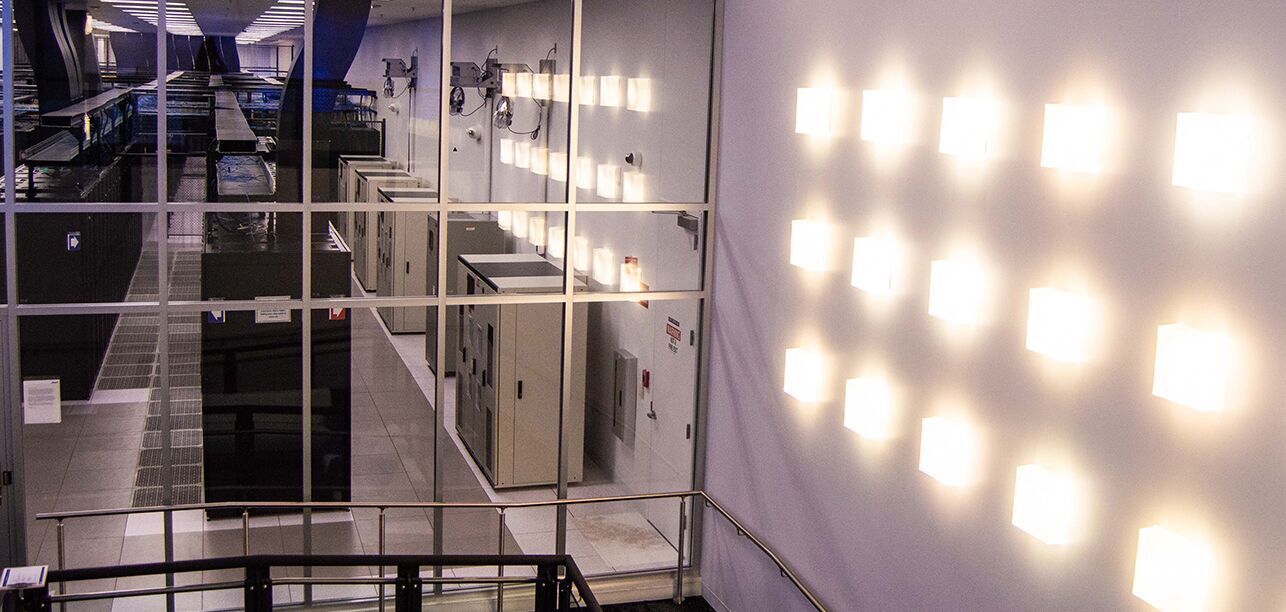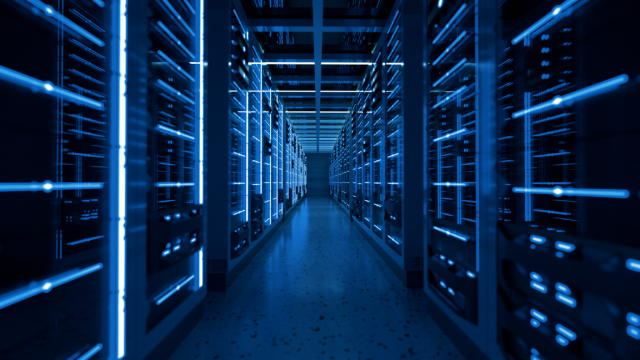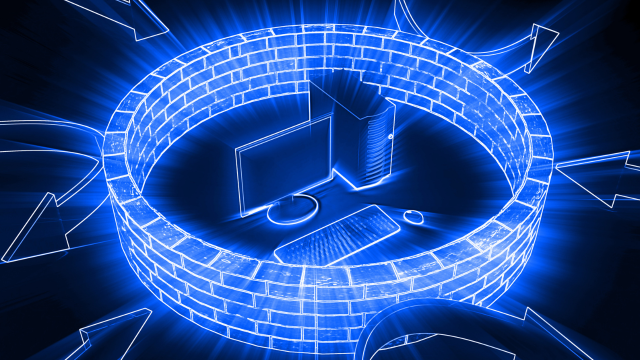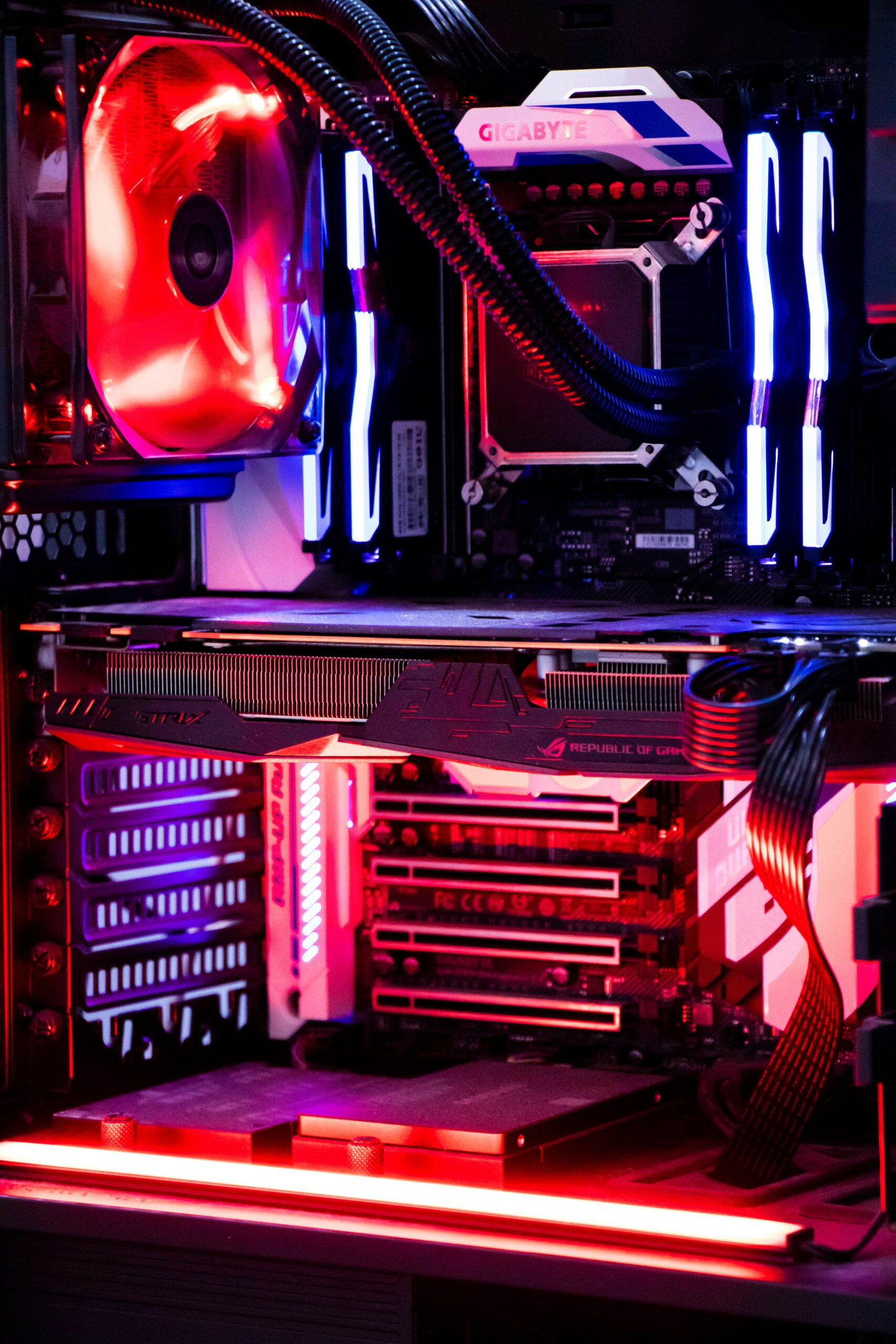Month: February 2018

Writing this letter marks an incredibly humbling and exciting moment for myself, as well as for the entire SingleHop family. Today is a major milestone in our history, as we’ve finalized our sale to INAP (NASDAQ: INAP), a leading provider of colocation, managed hosting, cloud, and network services. The acquisition makes perfect operational and strategic sense, and in the days and weeks to come, I can’t wait to share what that will mean product-by-product, market-by-market.
But today, I’d like to focus this news on the literally thousands of individuals who made the first chapters of SingleHop’s story possible: our customers, employees, and partners.
To our valued customers:
Around eleven years ago, well before “cloud” was common vernacular, my co-founder, Dan Ushman, and I saw an opportunity to disrupt the global IT space by leveraging automation to deliver infrastructure and managed services more efficiently and with greater reliability. We are where we are today because you’ve trusted us to support your businesses.
Handing over the management of your infrastructure is not a decision taken lightly—we understand that. Your income, the jobs you create and the innovation you deliver rests upon the services we provide. You’ve come to count on not just our network reliability, but also our Service First Support, the backbone of every solution we offer. And you should expect nothing less than that going forward. Our team’s focus on delivering an unparalleled service experience will remain front and center as we continue on with INAP.
What else can you expect? More data center locations, more services, bigger teams, and the growth engine of a public company. You have been asking us for new locations, and now we’ll be able to get you there, even faster. If you’re not familiar with INAP’s global footprint, check it out.
To SingleHop team members (a.k.a. SingleHoppers):
This is the next chapter of our story and growth. You were instrumental to getting SingleHop to this point. Your talent and drive is what made the culture at SingleHop what it is today, and we expect that to carry into the big things you will do as part of INAP. We’re uniting with the 500-plus person team at INAP, and together we will adopt a bigger, faster, stronger view of things to come.
Never would I have imagined nailing it the way that we have. From our scrappy, bootstrapped beginning, to now supporting more than 3,000 clients, approximately 10,000 servers, and more than 150 employees, we’ve built a great business together. These things don’t “just happen.”
People say a picture says a thousand words. I think this one says much more than that.

To our partners:
You will continue to contribute to our success in meaningful ways, and ours to yours. SingleHop’s partner ecosystem is one of the driving forces of our business, and we cherish the relationships we’ve built with each of you. We believe that with INAP’s global reach you will have an even stronger portfolio of services to fuel your growth. The acquisition will accelerate our ability to provide a more robust set of capabilities to your customers, helping you stay ahead of their IT journey.
Now that the deal is closed, it’s all about integration and growth. I’m staying on as the CMO of INAP and am excited to partner with Pete Aquino (CEO) and the rest of the executive team. Pete has built a strong and motivated team that will help take us all to the next level.
Thank you to my family, co-founder, teammates, partners, friends, shareholders, and supporters.
Here’s to the next chapter,
Zak Boca
Explore HorizonIQ
Bare Metal
LEARN MORE
Stay Connected

Archival Data Storage 101: How I Learned to Ditch the Tape and Love the Cloud
Backing up data has become a ubiquitous part of running a business today. In a data-driven society, there is too much at risk to not protect one of the most important assets to the business. Many of these risks originate from the inherent “physicality” of the traditional backup process: Manual execution of tasks, physical storage medium, and shipping data offsite in boxes.
The medium-induced risk is no worse than with the typical long-term data archiving process. For the last decade, many businesses have relied on last-generation technology for storing large amounts of data for the long haul (measured in years, not months). Backing up to tape is cheap and gets the job done. But is it still the way to go?
Tape Backup vs. Cloud Backup
Many a backup admin will tell you there are real long-term costs that come with the upfront savings. Safely rotating and storing tapes, testing tape data, and getting a copy of the data offsite add to the complexity and cost of what seems like a money-saving solution.
Even worse? Many businesses will cut additional corners to save time and money while unknowingly adding more risk to the equation. I’ve even heard a cringe-worthy story of a backup admin keeping the box of tape backups in the trunk of their car to fulfill the “offsite” requirement. Is the risk really worth the savings?
Enter the cloud. As we discussed last year, cloud storage comes in several forms and is not a one-size-fits-all product. For instance, public clouds like AWS and Azure offer easy entry into the cloud but have an assortment of hidden costs that may add up in the long term. Amazon Glacier has the lowest cost per gigabyte in the cloud.
Glacier is “cold” storage in the cloud designed for long-term archiving of data. While data put into Glacier has a low monthly cost, additional fees will be charged if you delete data early, or transfer/restore data from Glacier. What’s more, Glacier suffers from many of the drawbacks that tape has: limited ability to test and restore data, long restore times, and little vendor support. In fact, AWS support costs extra.
At the other end of the spectrum are private cloud storage solutions such as HorizonIQ Cloud Backup, also known as Backup as a Service (BaaS). This high-end, enterprise-grade storage solution allows you to take a copy of your onsite Veeam backups and store them securely in the HorizonIQ cloud. Your Veeam software automates much of the process, and you no longer have to worry about those tape headaches that kept you up at night, or if you’re that one admin, wondering if you locked your car.
What is Top-Tier Tier 2 Storage?
With BaaS solutions, however, budget can still be a concern for businesses looking at long-term retention of data. So, HorizonIQ has listened to customers wanting a middle ground: lower-cost cloud storage without the uncertainty presented by public cloud offerings. In December, we launched a second tier of our Cloud Backup solution powered by Veeam Cloud Connect (VCC).
The new “Economy Tier” or Tier 2 storage is a lower-cost BaaS offering that targets bulk and long-term Veeam storage requirements. While it does not come with the advanced features our “Performance Tier” or Tier 1 Cloud Backup storage, it fulfills a role that adds long-term archiving into an offsite cloud backup strategy.
How does HorizonIQ Tier 2 storage stack up against low-cost AWS Glacier storage?
For one, HorizonIQ does not charge for incoming or outgoing data. Costs are a predictable monthly fee per terabyte of data provisioned. Technical support is included for the HorizonIQ repository, as well as the Veeam Cloud Connect (VCC) connection into the HorizonIQ cloud. Secondly, there’s a major flexibility benefit to consider.
Customers can send Veeam backup data that has longer-term retention requirements to Tier 2, or keep critical short-term Veeam backup data on Tier 1 for faster restore times. Tier 1 and Tier 2 BaaS storage can be used together to create a robust backup strategy for Veeam Backups in the cloud.
So in conclusion, it’s time to ditch the tape and love the (right kind) of cloud.
Updated: January 2019
Explore HorizonIQ
Bare Metal
LEARN MORE
Stay Connected

The Importance of Redundancies in Your Infrastructure
In December 2017, an electrical fire knocked out power at Atlanta’s Hartsfield-Jackson International Airport.
The outage forced the FAA to issue a ground stop for hours in Atlanta, canceling thousands of flights and stranding thousands of passengers at the world’s busiest airport. The power came back on after about 11 hours, but it took days for the airport to return to normal operations.
The outage created a financial ripple effect, impacting the airport, airlines and travelers. Delta Air Lines uses Atlanta as its major hub and reported the outage cost the company up to $50 million.
Just imagine if something like this happened in your data center or to your network.
Why Your Environment Needs Redundancies
This scenario illustrates why it’s so important to have built-in redundancies in your environment.
Redundancies work by placing multiple channels of power or communication within your infrastructure and network. Think of your redundancies as insurance against failures. If you have multiple paths of connection, the loss of a single path would be inconsequential because your connection would be switched to another source.
To be fair, Hartsfield-Jackson International Airport did have a redundant power system in place. Unfortunately, the fire was so intense that it damaged the two substations providing power to the airport, including the backup system.
When you consider the financial, technical and PR damage caused by unplanned outages, it’s almost a no-brainer to include redundancies in your footprint.
Physical Redundancies
The first level of systems you need to consider is physical-level redundancies which back up your utilities, such as power and water. Adding these redundant systems will help eliminate single points of failure in your environment.
If there is an unplanned disruption or scheduled maintenance, these secondary components will automatically take control, keeping your servers and applications online. A setup like this is necessary for your critical applications. (Shameless plug: HorizonIQ’s Tier 3-type data centers include N+1 concurrently maintainable design.)
Network Redundancies
A network-level redundancy involves the use of both redundant links as well as network equipment, such as routers and switches. The concept is similar to a physical-level redundancy – should your main communication path go down, your servers can use your backup links to maintain availability and keep your business online.
In layman’s terms, consider your network redundancy like directions you’d get from your car’s GPS. If you are driving down the highway and there is an accident, your navigation system will divert you to a route that’s less crowded. It may not be the shortest route in distance, but it ends up being the quickest to your destination.
Of course, your network-level redundancy won’t have unlimited paths from which to choose like your car GPS. It will only work with paths that you’ve already established as your backups.
Facility Redundancies
Even with the best redundancy plans, there are always situations that are out of your control. Whether it be a man-made incident or natural disaster, there are certain instances in which an entire data center (or even city) could go offline. To keep your business up and running should the unthinkable happen, it’s important to consider facility redundancies.
Facility redundancies are very similar to disaster recovery solutions, but rather than having your backup site on standby for failover, you are normally running off servers in both locations. For instance, if you have a footprint in Atlanta and Dallas, you would set up your environment so it is equipped to handle your entire infrastructure should something happen in one of those sites. (Shameless plug #2: HorizonIQ has 51 data centers in 21 metropolitan markets around the world that you could utilize for your footprint.)
Implementing Your Redundancies
Implementing redundancies within a network or infrastructure is more than simply duplicating all your connections. Redundancies are necessary for maintaining availability, but when used in excess, they can be a drain on overall speed and performance.
It can be possible for a network to be overbuilt. When implementing redundancies, the key is to create backup paths built for efficiency, speed and availability. This means having a clear design that considers current failing paths and builds redundancies to fit exact pain points.
Remember, every IT network is unique. It’s important to be acquainted with your network’s strengths and weaknesses. Assess where your business’s connections terminate and where your resources are most available.
The best way to ensure you’re doing it right is leaving the strategy and setup to the experts. Our team has experience providing the best possible networking and infrastructure services for some of the most successful businesses in the world. HorizonIQs’s concurrently maintainable data centers are designed with built-in redundancies, so your network and servers will remain online even if there’s a disruption. Contact us today to learn about how we can provide a footprint for your infrastructure that’s always online, so you can focus on your core business.
Explore HorizonIQ
Bare Metal
LEARN MORE
Stay Connected

It’s a classic love story.
You meet, and it’s love at first sight. The first few weeks and months are great. Your partner supports your interests and you really enjoy the time you spend with each other.
But after a few months, you begin to notice some imperfections. Perhaps your partner isn’t quite as reliable as you’d like. Or maybe it’s a distance thing. And when you need help the most, your partner isn’t there for you.
So, you begin thinking, maybe this relationship isn’t for you. It’s time for you to break up with your old infrastructure provider.
Why You Should Make HorizonIQ Your Infrastructure Soul Mate
When considering the features you look for in your infrastructure soul mate, you’re probably after reliability, power, scalability, and security, among other things.
HorizonIQ’s data centers check off everything on that list (and more!), making our facilities the perfect match for whatever solutions your business requires.
Here are 10 things you and your company will absolutely love about HorizonIQ’s data centers.
Easy to Access
Our data centers are easily accessible to most major international economic and tech hubs. HorizonIQ has 51 data centers and 90 points of presence in 21 global metropolitan markets – from North America to Europe all the way to Asia and Australia. And most of those markets are linked via HorioznIQ’s reliable backbone, which ensures your business and servers are always connected, regardless of location.
20 kW Per Cabinet
You know that 90s song by Snap! “I’ve Got the Power?” It might as well be the unofficial anthem for HorizonIQ’s power capabilities. Our premium colocation facilities allow you to increase your power at the cabinet level up to 20 kW, all without adding to your existing footprint.
Highly Reliable
What good is a data center if it isn’t available? HorizonIQ’s service has greater than 99.999 percent reliability, meaning your systems are virtually always online. Plus, our concurrently maintainable design means you don’t have to worry about downtime for planned (or unplanned) outages.
24x7x365 Support
Our NOC team is among the best in the business. HorizonIQ data centers have experienced engineers and technical support on-site 24x7x365 who will monitor performance and resolve issues before they impact your business. Plus, our facilities all feature round-the-clock security to ensure no one gets in who isn’t supposed to be there.
Scalability and Flexibility
Your business priorities change, and our data centers make it easy to add to your environment. HorizonIQ’s configuration allows you to increase power, performance, and storage without adding to your footprint or moving equipment.
Wide Range of Services
HorizonIQ data centers have a robust portfolio of colocation, cloud, managed hosting, and network service offerings across our 51 locations. Want to connect your existing infrastructure to the cloud? We’ve got you covered. How about adding to your storage capacity within a managed footprint? You’ve come to the right place. Bottom line: HorioznIQ has the services to meet your unique business needs.
Fully Redundant Design
When the power goes out, you want to make sure your servers stay online. That’s why HorizonIQ’s data centers are built with N+1 redundancy. So, in the unlikely event that something knocks out the power, cooling, or other vital systems, your network and business will keep running.
Diverse carriers in MMR
Our data centers feature anything from a few dozen to a few hundred carriers in our state-of-the-art Meet Me Rooms. Our facilities also offer alternative transit and local options, so you’ll be able to find the connections you need to access your colocation or hosting environment.
Strict Compliance
Data security is a major issue, and HorizonIQ’s data centers meet or exceed all of the domestic and international standards for compliance. Our solutions will ensure your sensitive information is safe and your infrastructure remains HIPAA and PCI-complaint. Plus, HorizonIQ’s data centers are audited annually, and you can utilize these reports for your internal compliance requirements.
We’re Going Green
HorioznIQ realizes the importance of conservation and sustainability. So, we built our data centers to be energy-efficient while at the same time maximizing the performance needed to power your applications. Our eco-friendly data centers have received LEED Gold, Green Globes, and ENERGY STAR certifications.
We’re Ready for a Long-Term Relationship
The thing to love most about HorizonIQ data centers is how they can help your company reach its business goals. Whether you need hosting solutions for your IT infrastructure or are just looking for services to migrate your existing environment, you’ll find all of the solutions your business requires in our top-notch data centers.
Whether you’re ready for a long-term relationship or suffering from a fear of commitment (you know who you are), we invite you to learn more about how HorizonIQ can help your company grow. Contact us today and our data center specialists will help determine the right solutions for your business needs.
Explore HorizonIQ
Bare Metal
LEARN MORE
Stay Connected

What’s Wrong with My Site?
One of the most frustrating internet experiences is a website failing to load promptly. The only thing worse is when that slow website is your own.
Kissmetrics reports that 40 percent of users will abandon a site if it takes longer than three seconds to load. In addition, nearly half (47 percent) of users expect a web page to load in two seconds or less.
When your site is loading slowly, it’s important to diagnose the right issue. You wouldn’t take random medicine without visiting the doctor in the hopes of getting better. Similarly, you’ll want to narrow down the exact issue affecting your site.
There are a variety of different issues that could be causing your site to load slowly. Here are five common reasons you may be experiencing a slowdown.
1. Unoptimized Images
The first common reason for a slow-loading website is unoptimized images. Every image or file on a website needs to be loaded bit by bit. When images are unnecessarily large, they can be a significant drain on your load speed.
Luckily, the solution for unoptimized images is fast and easily managed. This is especially true for what is referred to as lossless images. These are images that can be shrunk down without any perceived loss of picture quality. Bringing your image file sizes down can boost your site speed and performance.
2. Too Many Plugins
Our second offender for slowness can come from too many plugins or addons that you may use in the backend to build your page. Many sites rely on plugins to improve their functionality. Plugins have their place and can bring necessary features to your site. However, using them excessively can slow down your load times and create a poor experience for your users.
If you suspect your plugins are slowing down your site, remove anything non-essential. Curating your site of unnecessary plugins and addons can bring increased speed and performance. Remember, even the most functional site will be ignored if users can’t load it in time!
3. Code Density
Another issue that could be slowing down your site is overly complicated or dense code. If the underlying developmental infrastructure of your site is dense, the harder it is for browsers to process and load. Thus, the heavier your code, the longer it will take for your users to load.
The solution to dense code may involve a little more expertise but is still manageable. Reducing the HTML markup of your site can bring major improvements and can be accomplished by using HTML tags sparingly and only when necessary.
A few simple fixes include removing HTML comments in scripts and any CDATA blocks in script elements. Another suggestion is to remove or collapse any white space within the code.
4. Shared Servers
If you’re on a shared server, your performance may be impacted by other users on your server. No matter how fast the rest of your site is, being in a queue with other users might drag down your speed.
Solving a server issue is simple and straightforward. If you’re on a shared server, you’ll experience immediate improvements in performance by moving to a dedicated server, which means you’re the only user running off that space (Shameless plug: HorizonIQ offers managed services and bare metal solutions on dedicated servers).
Finding the right service for your needs might take some research on your part, but will bring immediate results in terms of performance and speed.
5. High Traffic
Hold the phone.
Don’t websites want to receive high traffic?
The short answer is “Yes,” but sometimes overwhelming site visits can be too much of a good thing. In this instance, the traffic might be more than your server can handle, causing your site to crash.
When this happens, you may need to look at increasing your bandwidth and improving your underlying infrastructure. If it’s simply a case of outgrowing your previous site build up, you’re going to need to move to a hosting service better suited to the number of visitors that you’re receiving.
A Quick Fix for Your Slow Site
A slow site will drain your users and reduce subscribers. Luckily, a few quick fixes can go a long way towards getting you back up to speed.
HorizonIQ’s data center services can help address the infrastructure problems you might be suffering from crowded servers or bandwidth issues. Our unique solutions allow you the flexibility and scalability to keep your website running at top speed, giving your end users an optimal online experience.
Contact us today to speak with an HorizonIQ representative about how we can help your website move as fast as your business.
Explore HorizonIQ
Bare Metal
LEARN MORE
Stay Connected

Finding Security in the Smart Devices World
The internet of things (IoT) refers to the network of physical objects embedded with network connectivity.
This technology allows devices that were previously silent to communicate and share data. For instance, objects as complex as automobiles, public transportation and heart monitors can now share data with appliances like washing machines or refrigerators. The result is an explosion of both data creators and data collectors.
However, as the initial excitement and possibilities about IoT have subsided, it has created serious concerns about the functionality and security of connecting everyday devices. With experts forecasting that as many as 50 billion IoT devices could be connected by 2020, IT professionals are grappling with the problem of securing so many devices.
The Trouble Securing So Many Devices
One of the fundamental issues of IoT security is the sheer number of gadgets for which to account. Securing that many devices behind a single security firewall can be difficult. Just a few years ago we only had to worry about digitally securing our computers. Now we have to consider protecting our cell phones, wearable devices, home appliances and more.
Properly securing IoT could require an enormous investment of resources. Businesses already worry about the security of their networks being used through computers and smartphones, but as IoT grows, businesses may also have to secure ordinary objects, such as the motion detector that monitors how many people are in the conference room.
To make matters worse, HP has estimated that as many as 70 percent of IoT devices could be vulnerable to attack. With smart devices, such as watches, baby monitors and garage doors taking in thousands of data points daily, even small breaches could compromise millions.
Proactive Solutions for the Future
IoT brings a wealth of benefits and advantages to both businesses and consumers.
People who utilize smart devices can count on a treasure trove of relevant and targeted data. This can help companies manage everything from inventory tracking to remote workers. But managing our new smart gadget-driven world is not without potential pitfalls and security headaches.
Here are a few ways they can protect devices and networks from unwanted and malicious intrusions and keep consumers safe.
1. Patches
Developers need to ensure their devices are patchable, and then stay constant and current with available security updates. A problem still exists when patches are released, but users fail to take the necessary steps to update their devices – leaving hundreds of millions of unpatched and unsecured devices on the internet.
There is only so much that manufacturers and developers can do to remedy this problem, but two suggestions are to send alerts to users when a patch is available or allow users to opt in for automatic updates.
2. Consider Multiple OSes
Even when developers are proactive with patches, they need to understand these security updates will impact every user differently due to the variety of operating systems in use on individual devices. For instance, Apple, Samsung, Google and Microsoft all have their own IoT platforms, which don’t always communicate well with each other.
Developers need to consider a multi-layered security approach which will effectively function throughout the lifecycle of an IoT device, regardless of the operating system it’s running.
3. Password Requirements or Two-Step Verification
The next time you scan for nearby Bluetooth connections on your cell phone in a crowded place, you’ll probably see a few smart devices pop up.
Most devices already require passwords or two-step verification to connect, but developers should consider adding this security measure to all IoT products. Users will want their devices to automatically connect, but this should only be an option after security and authenticity are initially verified.
The simple fact is that most people who use IoT devices do not understand how they work and may wrongly assume that their devices are secure, which may not be the case if the product is discoverable by default.
Living in an Internet of Secured Things
Unfortunately, until there is a massive IoT security breach (and it’s likely not a matter of if, but when), we really won’t understand the risks associated with all of our interconnected devices. This is not to say we should abandon an IoT world because the security threat level is too great; the benefits far outweigh the risks.
While developers and manufacturers do hold some of the responsibility of mitigating these risks, the onus is also on users to understanding how devices will share their data and taking proactive steps – like downloading those security patches and frequently updating passwords – to protect their personal information.
Does your business have network security or IT infrastructure needs? Contact us today to learn more about INAP’s high-performance network services that will keep your applications running as fast as your business.













